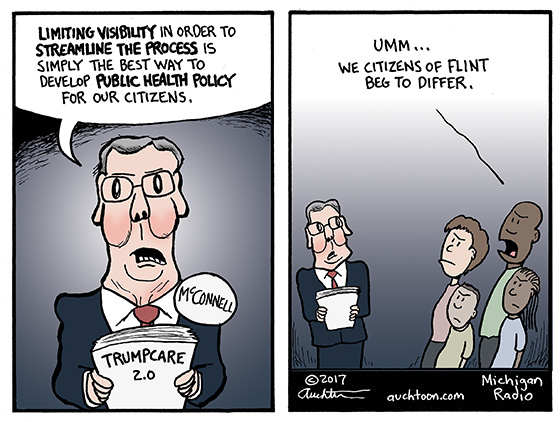How (Not) to Develop Public Health Policy
Ideas for cartoons can come from the oddest places.
This past Sunday, I was working on setting up our hammock in the backyard for the summer season and went down to the basement to collect the pieces.
Of course, instead of doing the sensible thing and taking multiple trips, I gathered as much as I could hold and made my way up the steps.
As I emerged by banging through the basement door — burdened by metal weight and clanging chains — my startled wife turned to look at me. All I could say was, “I feel like Jacob Marley.” (I know. A semi-obscure literary reference to A Christmas Carol on Father’s Day weekend — is there no end to the uproarious mirth at the Auchter household?)
But that triggered the idea. As I trudged out to the yard, I was literally thinking, “If Ebenezer Scrooge is the poster boy for a life (almost) lost to miserly greed, Mitch McConnell is surely the poster boy for a life lost to partisan politics. What could save him?”
I didn’t think a Christmas-themed cartoon in June would work, so I substituted the citizens of Flint for the “Ghost of Christmas” role — past, present, and (unfortunately) future.
By the time you read this, McConnell is scheduled to have rolled out his Senate health care plan (Trumpcare 2.0, the Son of ACHA, the “Tax Cut for My Wealthiest Friends” Plan — whatever they are calling it). And the focus will of course turn to its contents.
But let’s not forget about how it was created: with limited input and almost no visibility. Clearly, when this method was used for managing the water supply (and the lead poisoning and Legionnaire disease crises that followed), it ended in disaster for the citizens of Flint.
What are the chances of McConnell coming to his senses and repenting before it’s too late?
God bless us, every one.



